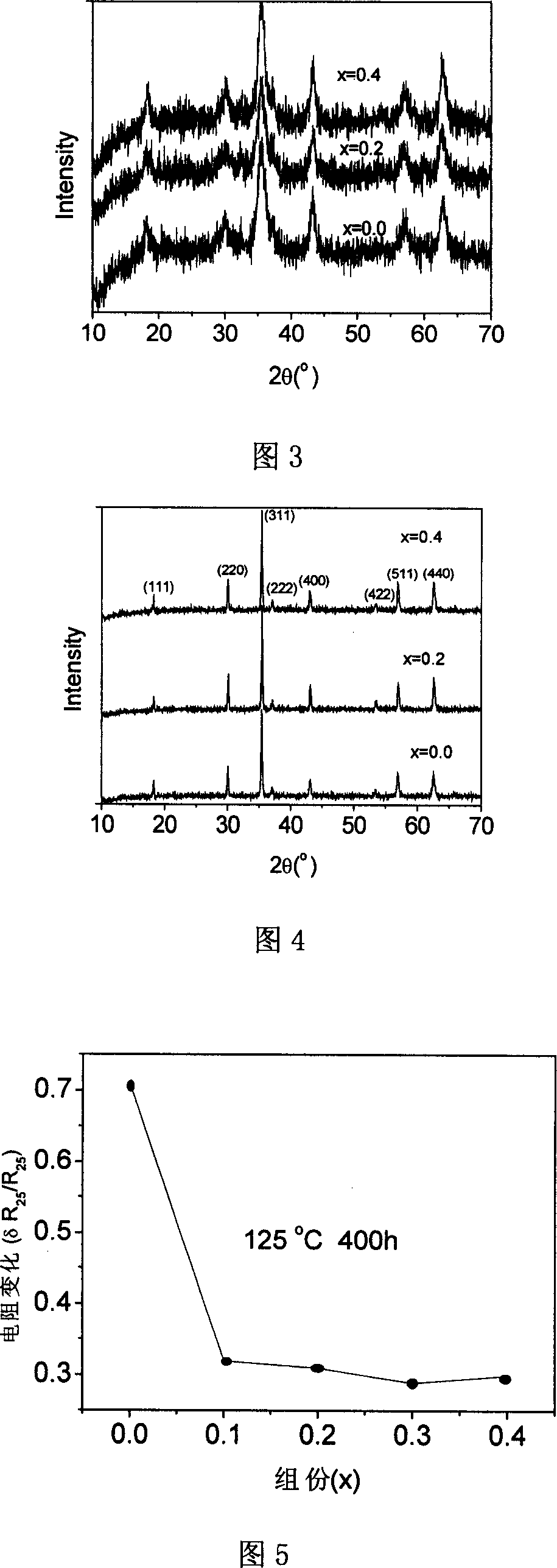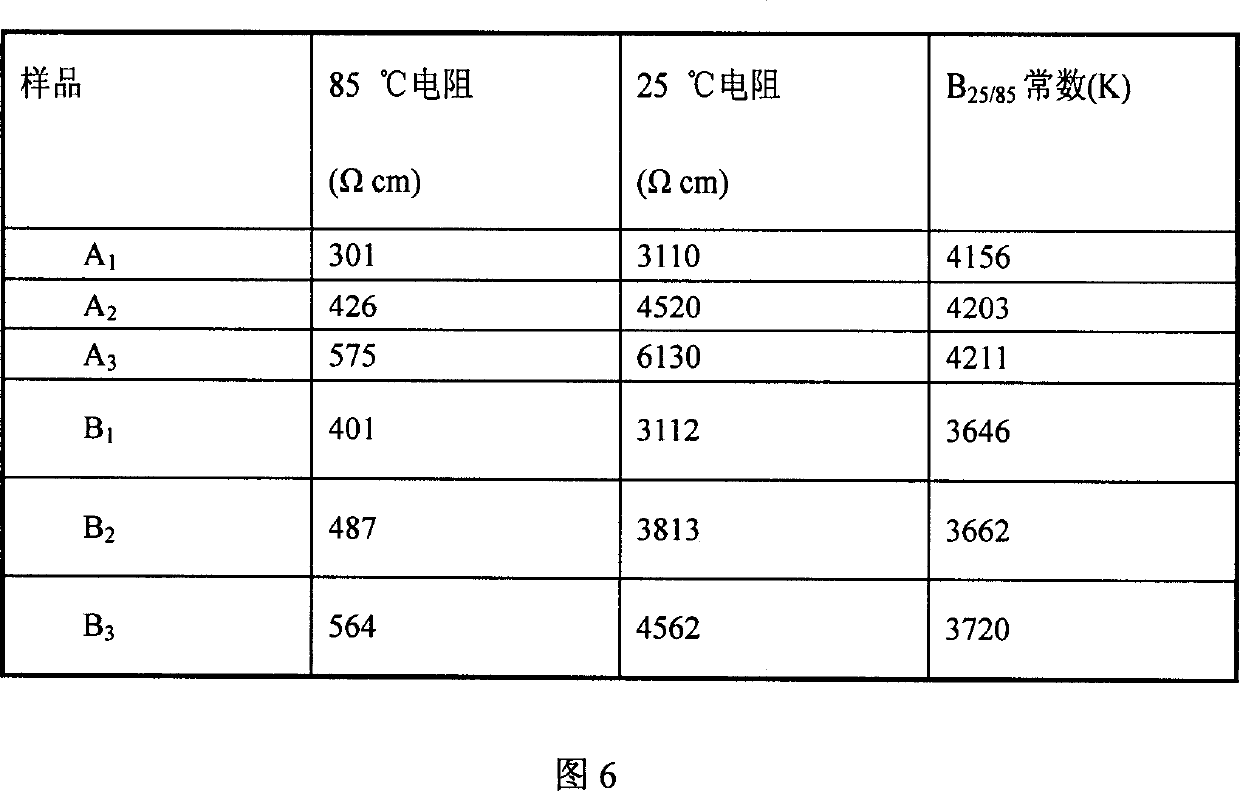High precision thermosensitive resistor nanometer powder production method
A nano-powder, thermistor technology, applied in resistors, resistor manufacturing, circuits, etc., can solve the problems of low uniformity of powder chemical composition, low yield, poor repeatability, etc., to improve thermal aging resistance. performance, improved thermal aging resistance, and the effect of good thermal aging resistance
- Summary
- Abstract
- Description
- Claims
- Application Information
AI Technical Summary
Problems solved by technology
Method used
Image
Examples
Embodiment 1
[0019] Example 1: First, the mole ratio is: Cr:Ni:Mn=5:30:65, respectively weigh 0.0005 mol, 0.003 mol, 0.0065 mol of Cr, Ni, Mn nitrate as raw materials, and mix and dissolve in 67mL deionized In water, control the molar concentration of metal ions to: 0.15mol / L, and configure it as the main component solution; add 3.89g of citric acid and 9g of polyethylene glycol (PEG) to the prepared solution to make a mixed solution, adjust with ammonia The pH of the mixed solution is 3, and the ratio of the total number of moles of metal ions in the mixed solution to citric acid is 1:1.6; the mixed solution is heated and stirred for 0.5 hours, as the hydrolysis and polymerization reaction proceed, a brown transparent sol is formed , Place the sol liquid in a drying box at 120°C to obtain a dry brown gel; put the resulting dry brown gel in a muffle furnace, heat it at 450°C for 2 hours, and perform spontaneous combustion treatment to remove It contains organic components and obtains a black l...
Embodiment 2
[0020] Example 2: First, the mole ratio is: Cr:Ni:Mn=10:30:60, respectively weigh 0.001 mole, 0.003 mole, 0.006 mole of Cr, Ni, Mn nitrate as raw materials, and mix and dissolve in 40mL deionized In water, control the molar concentration of metal ions to: 0.25mol / L, and configure it as the main component solution; add 4.86g of citric acid and 10g of polyethylene glycol (PEG) to the prepared solution to make a mixed solution, adjust with ammonia The pH of the mixed solution is 4, and the ratio of the total number of moles of metal ions in the mixed solution to citric acid is 1:2.0; the mixed solution is heated and stirred for 0.7 hours. As the hydrolysis and polymerization reaction proceed, a brown sol is formed. Place the sol liquid in a drying box at 120°C to obtain a dry dark brown gel; put the obtained dry dark brown gel in a muffle furnace, heat it at a temperature of 470°C for 2.5 hours, and then perform spontaneous combustion treatment. The organic components are removed, an...
Embodiment 3
[0021] Example 3: First, the mole ratio is: Cr:Ni:Mn=15:30:55, respectively weigh 0.0015 moles, 0.003 moles, 0.0055 moles of nitrates of Cr, Ni, Mn as raw materials, and mix and dissolve in 25mL deionized In water, control the molar concentration of metal ions to 0.4mol / L, and configure it as the main component solution; add 5.83g of citric acid and 12g of polyethylene glycol (PEG) to the prepared solution to make a mixed solution, adjust it with ammonia The pH of the mixed solution is 5, and the ratio of the total number of moles of metal ions in the mixed solution to citric acid is 1:2.4; the mixed solution is heated and stirred for 1 hour, and as the hydrolysis and polymerization reactions proceed, a black sol is formed. Place the sol liquid in a drying box at 120°C to obtain a dry black gel; put the obtained dry black gel in a muffle furnace, heat it at 500°C for 3 hours, and perform spontaneous combustion treatment to remove it Organic ingredients, and obtain a black loose po...
PUM
 Login to View More
Login to View More Abstract
Description
Claims
Application Information
 Login to View More
Login to View More - R&D
- Intellectual Property
- Life Sciences
- Materials
- Tech Scout
- Unparalleled Data Quality
- Higher Quality Content
- 60% Fewer Hallucinations
Browse by: Latest US Patents, China's latest patents, Technical Efficacy Thesaurus, Application Domain, Technology Topic, Popular Technical Reports.
© 2025 PatSnap. All rights reserved.Legal|Privacy policy|Modern Slavery Act Transparency Statement|Sitemap|About US| Contact US: help@patsnap.com



